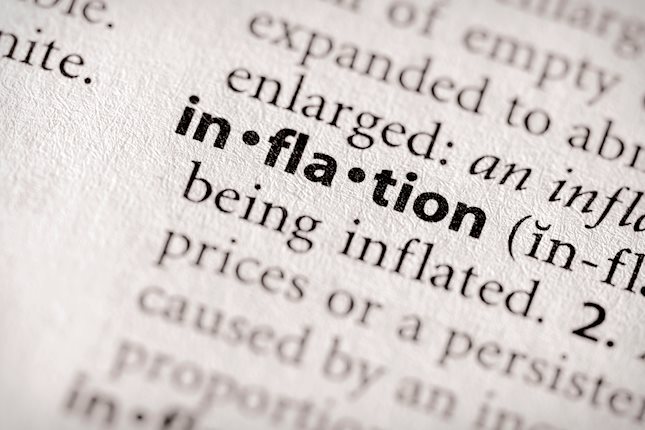It's been two weeks since I left, and in that time, the markets plunged into chaos. Now that I'm back, things have finally returned to calm waters.
Quick thoughts on the August meltdown
The fact that the Japanese yen saw a heavy post-Bank of Japan (BoJ) reaction is of course due to the accumulation of a high amount of short yen positions over the past few years on the divergence between the BoJ and the other central bank policies. And the very-late normalization of the BoJ has given hope that the abnormally soft BoJ policy is over. But there is little chance we see the BoJ act again to normalize further anytime soon. This is the message that the BoJ members – which were apparently not expecting such a BIG reaction - have been trying to give to calm down the upset traders. The USDJPY almost hit the 140 level last week during a massive carry unwind. The pair has rebounded since then and is trading near the 147 level at the moment and could eventually return and stabilize around the 150 level until further notice.
And for the US, the weak jobs data of two weeks ago - that helped trigger a further mayhem across the global markets - doesn’t mean that the US economy will collapse by next month. And investors know that. The proof is how fast the prices in the S&P500 rebounded with the sight of the slightest good news from last week’s weekly jobless claims from the US- a data point which is very much volatile and normally doesn’t trigger a notable market reaction. All eyes are on the weekly claims today.
Good news from inflation data
Anyway, good news is that inflation numbers from the US and the UK came in softer-than-expected this week. Inflation in the UK inflation rebounded from 2% to 2.2% in July versus a rebound to 2.3% expected by analysts while core inflation eased from 3.5% to 3.3% - more than expected by analysts. Headline inflation in the US fell below the 3% mark.
More importantly, the services inflation - which is what made inflation numbers so sticky in the developed world - also showed a better cooling last month. Time will tell how much of the services disinflation was due to Taylor Swift but the latest figures hint that the Federal Reserve (Fed) could start cutting the rates in September and other major central banks like the European Central Bank (ECB) and the Bank of England (BoE) could continue lowering theirs to the year end. As such, in the aftermath of the latest data from the major economies, the BoE is expected to announce two more 25bp rate cuts by the end of the year, the ECB is seen cutting its rates by 65bp - say two more times this year and up to six times by the end of 2025. And the Fed is seen cutting its rates by a whooping 100bp this year. A possible 50bp cut in September followed by two 25bp cuts for the last two FOMC meetings of the year.
Activity on Fed funds futures gives around 63% chance for a 25bp cut and 37% chance for a 50bp cut next month. The suspense could last until the next jobs report which will give a clearer idea on how much of the weakness of the latest jobs data was due to Hurricane Beryl – meaning how much of it was a temporary slowdown. I believe that a 25bp is more plausible based on the current data. Therefore, the weakness of the US dollar will certainly get balanced out if the Fed cut expectations slow down. As such, I expect the USD index to see support near the ytd low levels and limited room for a further upside momentum in the EURUSD above the 1.10 mark.
This report has been prepared by Swissquote Bank Ltd and is solely been published for informational purposes and is not to be construed as a solicitation or an offer to buy or sell any currency or any other financial instrument. Views expressed in this report may be subject to change without prior notice and may differ or be contrary to opinions expressed by Swissquote Bank Ltd personnel at any given time. Swissquote Bank Ltd is under no obligation to update or keep current the information herein, the report should not be regarded by recipients as a substitute for the exercise of their own judgment.
Recommended Content
Editors’ Picks

EUR/USD stays vulnerable near 1.0600 ahead of US inflation data
EUR/USD remains under pressure near 1.0600 in European trading on Wednesday. The pair faces headwinds from the US Dollar upsurge, Germany's political instability and a cautiou market mood, as traders look to US CPI data and Fedspeak for fresh directives.

GBP/USD trades with caution below 1.2750, awaits BoE Mann, US CPI
GBP/USD trades with caution below 1.2750 in the European session on Wednesday, holding its losing streak. Traders turn risk-averse and refrain from placing fresh bets on the pair ahead of BoE policymaker Mann's speech and US CPI data.

Gold price holds above $2,600 mark, bulls seem non committed ahead of US CPI
Gold price staged a modest recovery from a nearly two-month low touched on Tuesday. Elevated US bond yields and bullish USD cap gains for the non-yielding XAU/USD. Traders now look forward to the key US Consumer Price Index report a fresh impetus.

US CPI data set to confirm inflation ramped up in October as traders pare back Fed rate cut bets
As measured by the CPI, inflation in the US is expected to increase at an annual rate of 2.6% in October, a tad higher than the 2.4% growth reported in September. The core annual CPI inflation, excluding volatile food and energy prices, will likely remain at 3.3% in the same period.

Forex: Trump 2.0 – A high-stakes economic rollercoaster for global markets
The "Trump trade" is back in full force, shaking up global markets in the aftermath of the November 5th U.S. election. This resurgence has led to substantial shifts in both currency and bond markets, with the U.S. dollar index (DXY) jumping 2.0% + since election day.

Best Forex Brokers with Low Spreads
VERIFIED Low spreads are crucial for reducing trading costs. Explore top Forex brokers offering competitive spreads and high leverage. Compare options for EUR/USD, GBP/USD, USD/JPY, and Gold.